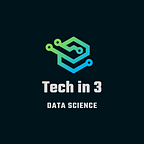Vertex AI
The forecasted AI annual growth rate between 2020 and 2027 is 33.2%.
Google Cloud revealed the global launch of Vertex AI, a regulated machine learning (ML) platform that helps businesses to speed the rollout and management of artificial intelligence (AI) models, today at Google I/O. Vertex AI takes approximately 80% lesser lines of code to train a model than competing platforms, allowing data scientists and ML engineers of all experience levels to apply Machine Learning Operations (MLOps) to effectively design and operate ML projects over the entire software lifespan.
The intention of Vertex AI is to have an environmentally friendly in which companies can see frameworks from research to development.
Specifications of Vertex AI:
Using Google Cloud, “You went to AutoML Perception to build a model, but you couldn’t use the same collected data for anything else on board.
Vertex AI aims to address these concerns by allowing highly flexible interfaces and providing access to MLOps resources for model maintenance and management in development. It also claims to shorten the time required to build and train models. The interface combines Google Cloud services for developing ML into a single cohesive UI and API. Working in a unified setting can make it easier to transition models from research to discovery of patterns and forecasting.
- A common UI for all ML workflows
- Pre-trained API availability for computer vision, NLP, video, etc.
- End to end Integration with data
- Support for all open-source frameworks
Common ways to take advantage of Vertex AI:
Feature Engineering:
Vertex Feature Store, a completely maintained rich feature registry, can be used to serve, exchange, and replicate ML features; Vertex Experiments can be used to monitor, evaluate, and explore ML studies for quicker model selection; Vertex TensorBoard can be used to simulate ML hypotheses, and Vertex Pipelines can be used to simplify the MLOps process by standardizing the development and execution of ML pipelines.
Training and tuning of Hyperparameter:
Create cutting-edge ML models without writing code through leveraging AutoML to decide the best model configuration for your image, tabular, text, or video forecasting mission, or by using Repositories to make different models. Vertex Training provides fully controlled training facilities, while Vertex Vizier facilitates hyperparameter optimization for optimal prediction performance.
Model Management and Monitoring:
Continuous monitoring continuously watches indications for predictive output of the model and warns you when they diverge, diagnoses the source of the divergence, and triggers model-retraining pathways or collects appropriate training data.
Vertex ML Metadata makes it easy to inspect and regulate the ML workflow by automatically monitoring inputs and outputs to all modules in Vertex Pipelines for an artifact, background, and operation tracking.
Edge:
Vertex ML Edge Manager (in beta) is intended to enable the smooth rollout and management of edge presumptions and automated systems across modular APIs, allowing you to spread AI through the private and public cloud networks, on-premises data centers, and edge applications.
Model serving, tuning, and Understanding:
Vertex Prediction simplifies the deployment of models into development, whether for digital serving via HTTP or batch projection for bulk scoring. Custom models based on any system (such as TensorFlow, PyTorch, scikit, or XGB) can be deployed to Vertex Prediction, with built-in tooling to monitor model output.
Explainable AI provides comprehensive model evaluation measurements and attributes presumptions. Explainable AI indicates the importance of each input attribute to your forecast. AutoML Tables, Vertex Prediction, and Notebooks all have this feature out of the box.
“Machine learning will automate jobs that most people thought could only be done by people.” ~Dave Waters
